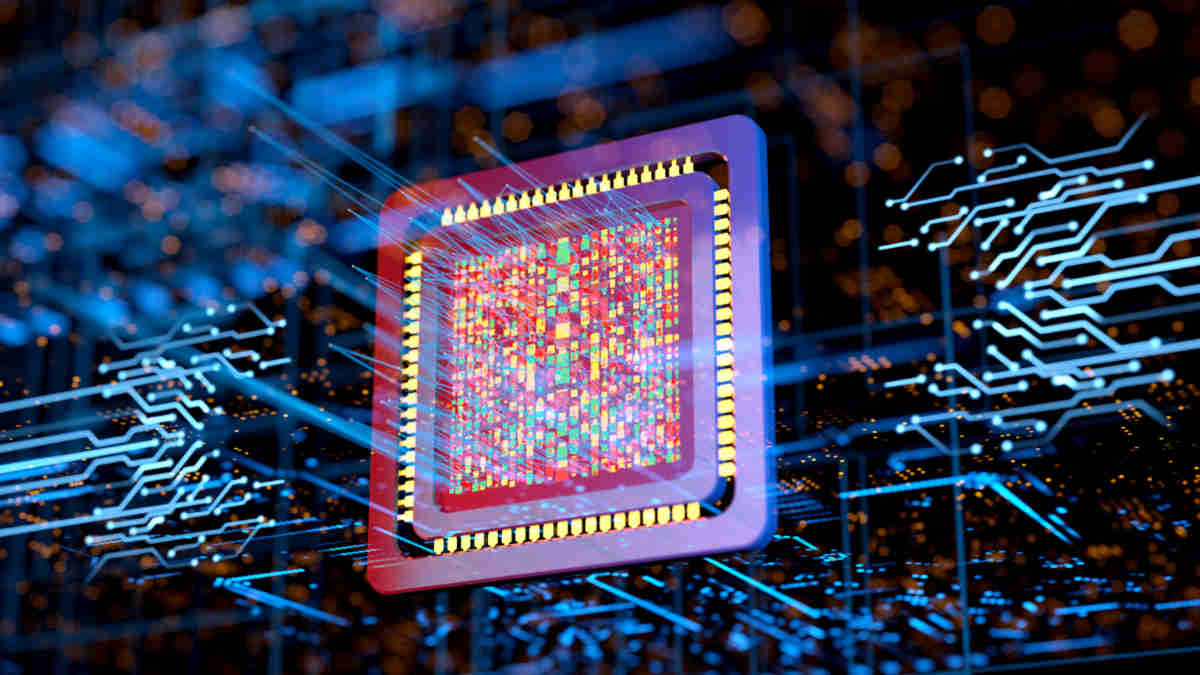The Ethical Investor: As Nvidia soars, is it time to consider its environmental impact?

As Nvidia soars, should ethical investors worry about environmental damage? Picture Getty
- Nvidia’s market value hit US$3 trillion, surpassing Apple
- But as Nvidia soars, should ethical investors worry about environmental damage?
- Nvidia’s powerful chips could offer hope for reducing carbon emissions
Nvidia’s shares reached unprecedented heights this week, catapulting the artificial intelligence chipmaker’s market cap to an impressive US$3 trillion.
Surpassing Apple, Nvidia now holds the position of the world’s second most valuable company behind Microsoft.
This surge in value aligns with the company’s upcoming 10-for-one stock split, scheduled for later tonight on June 7th, a move expected to enhance the company’s appeal to retail investors.
However, amidst Nvidia’s ascent, ethical investors have expressed concerns about its expanding footprint and impact on carbon emissions. Could there be a downside to Nvidia’s remarkable rise?
The fact is, with each stride in personal computing, the efficiency and power of computer chips have advanced steadily over time.
Yet, as chip manufacturers continue to cram more transistors onto ever-shrinking silicon surfaces, the fabrication process has become increasingly energy-intensive.
The energy used in chip manufacturing can sometimes even surpass the energy consumed by the chip over its entire lifespan.
“The energy it takes to physically manufacture a computer chip can be more than the chip consumes in its entire 10-year lifetime,” says Gage Hills, Assistant Professor of at Harvard.
This paradox highlights the environmental consequences of meeting the growing need for energy; and as the world turns to artificial intelligence, we find ourselves in a catch-22 scenario.
Here’s the problem
A semiconductor fabrication unit, or Fab, is where raw silicon wafers are transformed into integrated chips, also known as ICs.
Making semiconductors involves using materials like silicon, copper, aluminium, and rare elements, along with significant amounts of water and energy.
For example, it takes about 285kWh of power to fabricate semiconductor circuits on a 150mm wafer, or 1.6kWh per square centimetre.
Surprisingly, this process contributes to 31% of global greenhouse gas emissions, even more than electricity generation, which accounts for 27%.
The production of these materials not only depletes natural resources but also potentially generates a lot of waste. Additionally, extracting and processing these materials could release greenhouse gases into the atmosphere.
Water also plays an indispensable part in semiconductor manufacturing, with plants requiring large supplies of water to meet increasing demand. This process is highly energy-intensive and generates significant waste.
Ultra-pure water has to be used to rinse and clean silicon wafers, a crucial step in their production.
For context, producing 1,000 gallons of ultra-pure water requires around 1,500 gallons of municipal water, and semiconductor fabs consume 5 million gallons daily.
It’s clear that promoting sustainability in this sector is imperative given these staggering statistics.
AI data centres consuming more energy
Also, as the adoption of artificial intelligence drives up the demand for data centres, there are growing concerns about their substantial energy consumption.
These complexes, often sprawling over 10,000 square metres, are devouring more electricity, posing a threat to climate change mitigation efforts.
Experts warn that the growth trend is alarming. In the US alone, data centres accounted for over 4% of electricity usage in 2022, a figure expected to climb to 6% by 2026.
This surge is driven by the broader adoption of AI and cryptocurrency, which are energy-intensive industries.
For instance, Nvidia saw its revenue surge by almost 300% in just three months, indicating a substantial increase in its energy usage.
While Nvidia argues that its products can actually reduce energy use in data centres, concerns linger about the overall impact of AI expansion.
Cryptocurrency mining, another major strain on data centres, accounted for about 0.4% of global energy consumption in 2022, equivalent to the energy footprint of small country like the Netherlands.
As AI proliferates, it’s evident that data centres will play a bigger role in the carbon footprint of the IT industry, so addressing their energy consumption is crucial in the fight against climate change.
Nvidia’s powerful chips offer hope
Nvidia’s role in addressing environmental issues within the tech industry, particularly in the era of AI, cannot be overstated.
The company has consistently emphasised the potential of its powerful chips, notably its GPUs, to enhance energy efficiency and thereby reduce carbon emissions in data centres.
Compared to traditional CPUs, Nvidia GPUs are said to be much more efficient, requiring less energy to perform the same tasks.
Nvidia CEO Jensen Huang has stressed the energy efficiency of these GPUs for AI data centres, saying that they are “typically 20 times more energy efficient for specific AI and HPC workloads compared to traditional CPUs.”
Huang also points to Nvidia’s RAPIDS Accelerator as a game changer for the environment.
Essentially, the RAPIDS Accelerator acts like a turbocharger for computers, particularly when dealing with large-scale data tasks. By utilising Nvidia’s powerful GPUs, the RAPIDS Accelerator accelerates processing and could potentially cut a data centre’s carbon emissions by as much as 80%.
The technology has received praise from big names like Adobe and AT&T. These companies have put the technology to the test and seen impressive results in terms of faster speeds, lower costs, and significant gains in their AI model training.
Separately in May, the Perlmutter supercomputer at the National Energy Research Scientific Computing Center (NERSC) in Berkeley, California, reported that by using Nvidia A100 Tensor Core GPUs, the supercomputer achieved an average energy efficiency gain of five times.
And just last week at the Computex conference in Taipei, Huang introduced “Rubin,” the next-generation chips for data centres, which are the successors to the previous generation “Blackwell” chips.
“A new computing age is starting,” Huang declared.
So what do we make of all this?
For ethical investors concerned about the environmental impact of AI chips, there is reason for optimism.
Innovative advancements like more powerful chips that use less energy offer a hopeful path for reducing carbon emissions.
These solutions not only deliver faster processing and cost savings, but also provide substantial environmental advantages, potentially leading towards a more a greener future in computing.
Now read: Nvidia reckons ‘every $1 spent on a GPU returns $5’ – and experts agree
Related Topics
UNLOCK INSIGHTS
Discover the untold stories of emerging ASX stocks.
Daily news and expert analysis, it's free to subscribe.
By proceeding, you confirm you understand that we handle personal information in accordance with our Privacy Policy.








